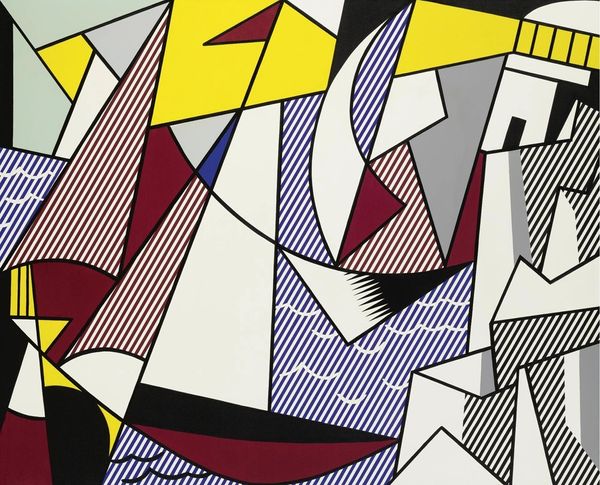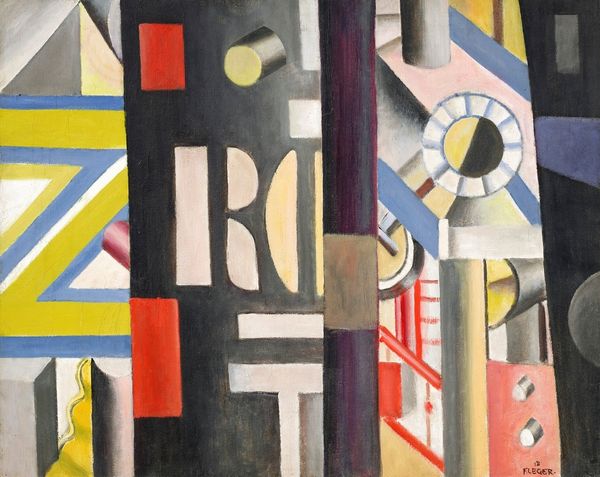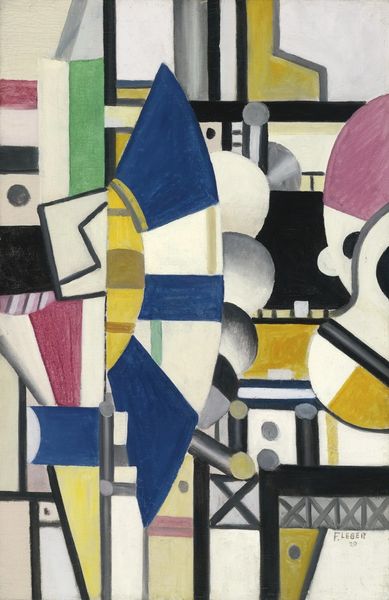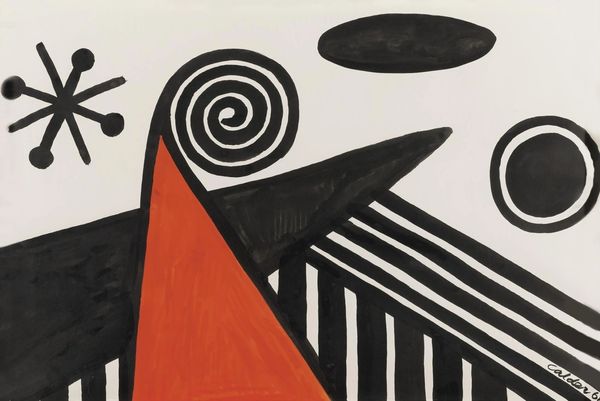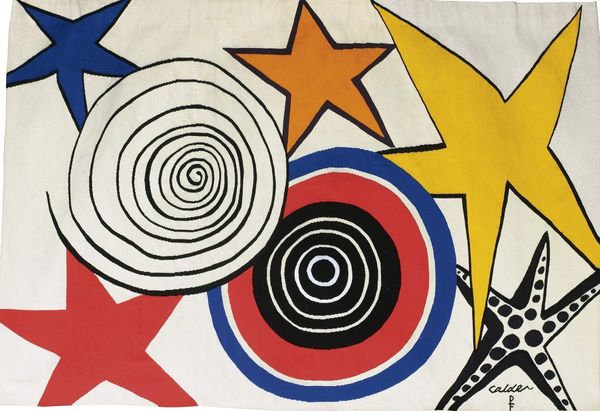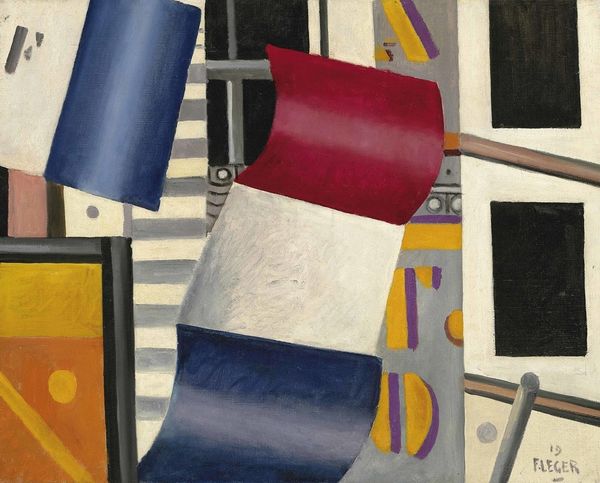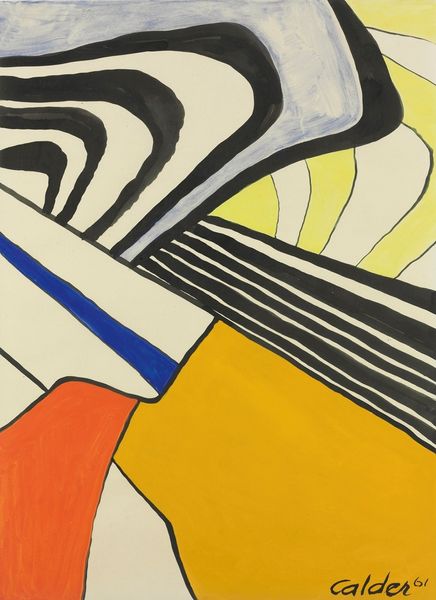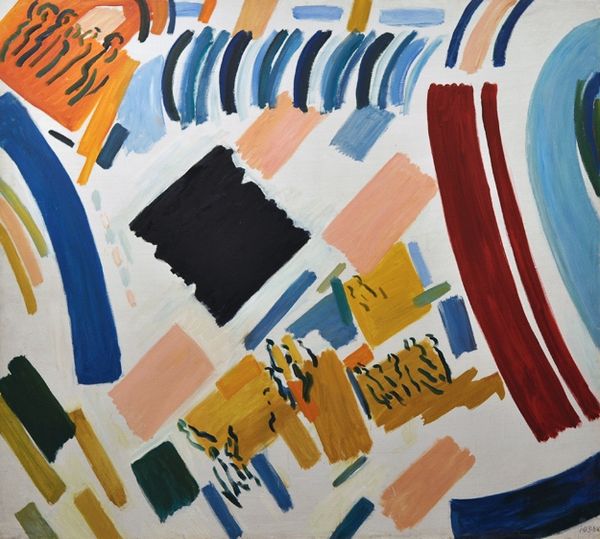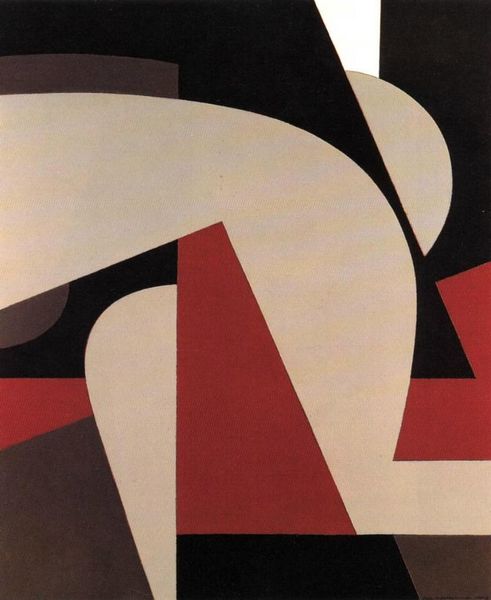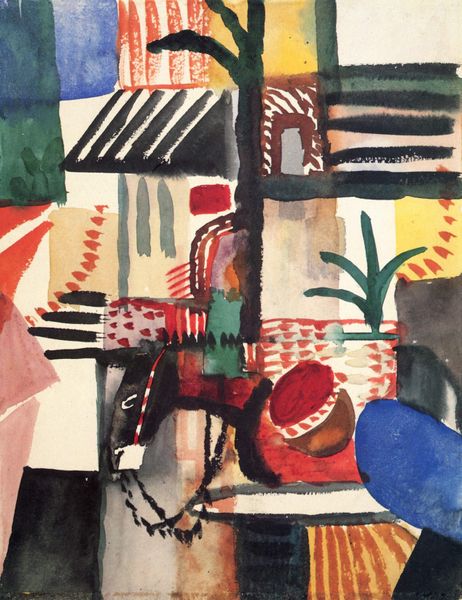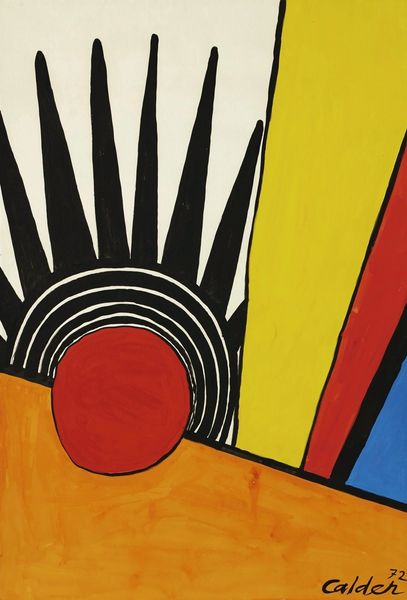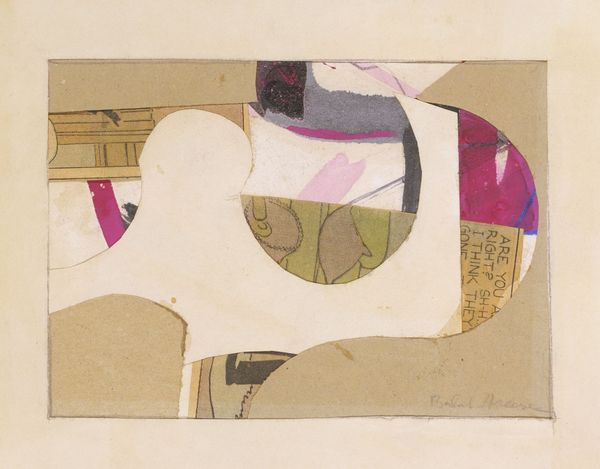
painting, acrylic-paint
#
art-deco
#
cubism
#
painting
#
acrylic-paint
#
abstract
#
form
#
geometric
#
abstraction
#
line
#
modernism
Copyright: Modern Artists: Artvee
Curator: Fernand Léger's 1922 costume design for the ballet "Skating Rink" offers a fascinating insight into the cross-pollination of visual arts and performance during the interwar period. Editor: It's so playful, isn't it? Almost like a child's construction set rendered in bold, primary colors. The severe geometry is tempered by a sense of lightness, I think. Curator: Léger was deeply involved in the avant-garde movements of his time. This piece reflects the influence of both Cubism and Art Deco, blending fractured forms with a streamlined aesthetic that spoke to modernity. It’s rendered with acrylic paint, indicative of its era, the 1920s, which was all about technological advancement. Editor: Definitely. I’m particularly drawn to the way Léger reduces the human form to its most basic components – circles, squares, rectangles. There's an element of deconstruction that speaks to the changing social landscape of the 1920s. These are shapes divorced from their realistic settings. Curator: Absolutely. The ballet "Skating Rink," for which this costume was designed, explored themes of movement and machinery. This was after the devastation of WWI. Artists reflected on the rise of industrialization and technology as signs of progress. Léger saw beauty in the machine age. Editor: And this design captures that feeling perfectly. It’s both futuristic and somehow primitive. Look how the colors interact to create a visual rhythm that mirrors the kinetic energy of the skating rink. The red stripes, that black band – are they a skirt? A strange robotic human. Curator: Consider the socio-political context as well. After the devastation of World War I, there was a collective desire to break from the past, to embrace innovation, and, yes, to literally reconstruct what life meant. Abstract, deconstructed art really started coming into its own then. Editor: It's a wonderful reminder of how artists often engage in a visual dialogue with society, mirroring its hopes, fears, and evolving identities. It is also nice how well painting can take shape as design. Curator: Indeed. It exemplifies a historical narrative reflecting society, modernity, and art, providing rich food for thought, not just through aesthetics alone. Editor: Well said. I think I'll remember that.
Comments
No comments
Be the first to comment and join the conversation on the ultimate creative platform.
